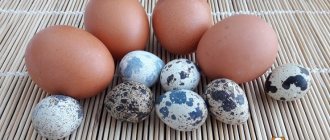Often, owners of four-legged animals humanize their pets too much, forgetting that in their desire to pamper the animal and express their feelings they can harm it. For example, not all owners ask the question “can dogs have sweets” and are happy to treat them with cookies, chocolate, candy or a piece of cake. If the owners do not do this, there are always friends and guests who are unable to resist the pleading gaze of the tailed cunning creatures and slowly feed them a tasty morsel, without thinking about the consequences. And they can be quite sad.
Is it possible to give a dog sugar?
First, you need to understand whether you can give your dog sugar, and what a sweet treat is for an animal. We usually classify sweets as sweets, cookies, marshmallows, marmalade, pies and cakes. But in fact, everything that contains refined sugar, even in small quantities, is sweet. Store-bought yoghurts, waffles, gingerbread cookies, crackers, white bread, buns, bagels and even honey can be classified in this category. Anything that contains fast carbohydrates in large quantities: pasta, sweet fruits (bananas, grapes in any form).
The animal’s body is completely unsuited to processing “artificial carbohydrates” and is unable to cope with them. After all, before dogs were domesticated by people, they didn’t eat sweets. In nature, it was quite difficult to obtain pure carbohydrates - bees do not just give up their product and sting painfully, and fruits grow high on trees. To the question “is it possible to give a dog sweets” there is only one answer - a categorical no!
Prohibited Products
You can’t think that all sweet fruits are suitable for satisfying a dog’s carbohydrate hunger.
The list of prohibited products includes:
- fresh/dried grapes - they catalyze the fermentation process in the intestines and are considered quite toxic;
- persimmon, cherries and cherries - consumption of these fruits threatens intestinal obstruction, which occurs due to the fault of the seeds, which provoke inflammation of the small intestine;
- citrus fruits - the substances they contain often become a powerful food irritant. Four-legged dogs usually don’t like the taste of citrus fruits, but if an orange slice is eaten, monitor the reaction of the dog’s body;
- avocado – it contains persin, a fungicidal toxin to which domestic animals (rabbits, horses and birds) react especially acutely. For dogs, persin is not as dangerous as it is unpleasant, as it can lead to diarrhea;
- sweet acorn - this forest delicacy ends up not only in the stomachs of wild boars. Sometimes it is swallowed by ill-mannered dogs whose owners have not taught selective eating behavior on the street/in the park. A dog that has eaten acorns receives a considerable dose of tannins, which threatens not so much poisoning as constipation.
Important! If you want to pamper your dog with sweets, take into account the advice of a veterinarian who has been caring for the animal from the first days of life and knows the weak points in its body. If the doctor gives the go-ahead for nuts and fruits/vegetables, follow the measure and monitor your pet’s condition.
There is a second list of prohibited sweets, which includes confectionery, baked goods and any (for example, fermented milk) products with dyes, flavors, preservatives and sweeteners.
The following sweets are especially undesirable:
- chocolate – it contains theobromine, which is harmless to humans, but extremely dangerous for animals whose body is not adapted to excrete this alkaloid. In large quantities, it turns into poison, having a negative effect on the dog’s heart muscle and central nervous system. A bar of high-quality chocolate can even be fatal;
- Xylitol is a polyhydric alcohol sweetener. Manufacturers love to add it to their sweet products. It is most often found in chewing gum, which dogs often find on the pavement;
- yeast dough - it also contains refined sugar and single-celled fungi (yeast itself). When it gets into a dog's stomach, the dough swells, causing pain, pain and flatulence. It is also believed that yeast has a toxic effect on the dog's body.
You will have to study the gastronomic preferences of your four-legged friend throughout his life . If he wants something sweet, experiment based on your knowledge of the benefits/harms of specific foods, but start with small portions. Once healthy treats have been identified by you and approved by your dog, stock up on them for future use. They can be useful to mask the unpleasant taste of the medicine if the dog gets sick or when training it.
Return to content
Why is sugar so bad?
Many people know that carbohydrates are an important and necessary element for the body. It is carbohydrates that are converted into energy. That is, they are really needed of high quality and in reasonable quantities. What happens if they enter the body in excess?
Substances obtained with food undergo a process of processing from carbohydrates into glucose, then into glycogen. In the form of glycogen, carbohydrates are contained in small quantities in the liver, blood and muscles. Any physical activity allows you to spend them, and at the next meal you can restore the supply. If the amount of carbohydrates entering the body exceeds its energy needs, there is only one way out - to put them “in reserve,” that is, in the form of fat deposits. As a result - metabolic disorders, diseases of the endocrine system, and sudden weight gain. Obesity in dogs is a fairly common problem.
Another problem is the risk of developing allergic reactions and general intoxication of the body. When the liver and pancreas cannot cope with large amounts of carbohydrates, metabolic products appear. They can cause allergies and become toxins. Dogs with a predisposition to diabetes are at risk. Even if you give your dog small portions of sweets, the disease will not be long in coming.
Is it possible to give sweets to dogs if there is no cause for concern and no obvious symptoms of any disease? The insidiousness of sugar is that health problems do not begin immediately. The negative effects of sweets are cumulative, and their manifestation is often associated with other diseases or the presence of parasites in the body. It can easily be mistaken for flea dermatitis, fungal infections or a tick bite.
You may be wondering what cereals can be given to dogs.
Healthy treats for four-legged animals
Sweets are important for dogs because without them it is difficult to achieve the recommended level of carbohydrates. Thanks to their pleasant taste, they are also good for rewards. To avoid the problems listed above, treats should be healthy and safe. These products include:
- Vegetables (pumpkin, beets, carrots, sweet potatoes). Improves intestinal function and prevents constipation. The recommended amount is 20-50 g per day.
- Unripe bananas. Rich in magnesium, potassium and selenium. Normalize hemoglobin levels and reduce the amount of “bad” cholesterol.
- Unsweetened apples, peeled and cored. They improve digestion and skin condition, and also have a beneficial effect on brain function.
- Honey. It is important to take the most common one, without additives. The norm per day for an adult medium-sized dog is 1 teaspoon, and for a puppy – 0.5 teaspoon. Honey often causes allergies, so be sure to monitor your body's reaction.
- Raspberries, strawberries and blueberries. Important for immunity and slow down the aging process. Despite the obvious benefits, berries should be given in moderation so as not to provoke allergies or diarrhea.
- Watermelons and melons. They are low in calories and rich in vitamin content. Due to their water content, these products put a lot of stress on the kidneys, so remember to use moderation, as in the case of berries.
In addition to natural sweets, it is recommended to use some industrial treats: dog biscuits, meat spirals, pig ears and sugar bones. They can be found at any pet store.
NOTE!
Fruits and berries with seeds, avocados, citrus fruits, grapes and raisins are strictly prohibited. Their use is fraught with suffocation, indigestion and intoxication.
Symptoms of poisoning
Manifestations of a negative reaction to sweets in a dog can be observed as:
- Sour eyes in the morning and throughout the day;
- Increased secretion of earwax, unpleasant odor from the ears, redness and dryness of the skin of the auricle;
- The animal's fur becomes faded, becomes oily, and dandruff may appear;
- Rash, redness, small sores, especially noticeable on the stomach, chest and chin;
Monitor the dog's condition. Other diseases with similar symptoms cannot be excluded. But, when talking with a veterinarian, you must tell them that the dog ate sweets. This will save time on making the correct diagnosis and allow you to prescribe effective treatment as quickly as possible.
Special cubes
For allergies
Execan is a drug for allergies and its manifestations - skin itching and rashes.
The main active ingredients are dexamethasone, nicatinomid and methionine and vitamin B6.
The drug is quickly absorbed into the blood, and its remains are excreted in the urine.
It has a convenient release form, reminiscent of refined sugar cubes - one dose weighs 8 grams. You can feed it to your pet directly from the palm of your hand, dissolve it in water or mix it into food.
The dosage is calculated based on the body weight of the animal. For the first 4 days of treatment it is as follows:
- From 30 kg or more – 2 cubes per day.
- From 15 to 30 kg – 1.5 cubes per day.
- From 5 to 15 kg – 1 cube per day.
- For dogs weighing less than 5 kg and cats – half a cube per day.
Upon completion of the four-day stage, the medicine should be given for another 8 days, but the dosage should be half the original
Important! The drug is contraindicated in pregnant bitches, patients with diabetes mellitus and viral infections.
From worms
Polyvercan is an anthelmintic agent for the fight against intestinal parasites (nematodes, cestodes).
Used for the prevention and treatment of diseases such as:
- toxocariasis;
- dipylidiasis;
- uncinariasis;
- toxascariasis;
- hookworm;
- diphyllobothriasis.
Available in the form of yellowish sucrose cubes with a longitudinal groove to regulate the dosage. It is given to the pet unchanged, mixed into drinking water, or forcefully poured into the mouth using a syringe.
The dosage is calculated based on the weight of the animal, where for every 5 kg there is half a cube. The minimum dosage is 0.5 cubes, the maximum is 6 cubes per day. For prevention, a single dose is enough; for therapy, a two-time dose with a break of 10 days is needed.
Contraindicated in pregnant females and in the presence of allergies to components.
Why does a dog ask for sweets?
Owners often justify themselves by saying: “it’s impossible to refuse him, that’s the way he looks.” But the fault lies entirely with the owners. After all, it was you who encouraged the execution of the command with a piece of cookie, treated him with rich sweet cream from the cake, gave him candy so that the pet would leave the table. Each time, the dog developed abnormal eating behavior and a persistent attachment to sweets.
And every time you justified yourself that one piece would do nothing for your pet, or that occasionally you could still give your dog something sweet.
Features of metabolic processes in a dog’s body
A dog is a carnivore, a natural predator. The natural food intended for it does not contain sugar, which is classified as organic substances - carbohydrates. It is practically not absorbed by the dog’s body. Metabolic processes occur slowly when eating sweets.
The filtering organs are overloaded: excess sugar is deposited in the kidneys and then appears in the urine. As a result, the dog experiences frequent urination, beneficial substances are washed out, and metabolic processes are disrupted. As a result, the usual portions of food are no longer enough to satiate, and the pet becomes obese and has diabetes.
How to replace sweets
Can dogs be given sweets in any other form? Is there an alternative to sugar, how to make your pet’s diet correct and balanced, but at the same time be able to pamper him with something tasty?
Manufacturers of food and pet products are well aware of the problem and the challenge facing them. The industry offers a huge range of treats for dogs that can replace harmful sweets and develop new, good and correct eating habits:
- Biscuits with the flavors of your favorite delicacies (chocolate, yogurt) will replace sweet pies and cakes. Suitable as a treat after unloved procedures (brushing teeth, ears, trimming nails, etc.);
- Croquettes, cookies - suitable as rewards during walks and activities;
- By-products, dried ears, sinews, tripe, tails are given to the dog to distract them from the table while people are eating. In addition, such treats help maintain healthy teeth.
What to do if the dog still ate the “yummy”?
Much depends on what exactly the pet ate. One small cookie will not cause much harm to your health, the main thing is that it is not repeated systematically. Otherwise, sucrose will accumulate, which will lead to undesirable consequences.
What to do if your dog has eaten a lot of sweets? Measures should be taken depending on the general condition of the pet:
- If you eat raisins (or products containing the ingredient: rolls, candy bars, etc.) and signs of poisoning appear, it is important to immediately take the animal to a veterinary clinic. The doctor performs lavage, rehydration, and prescribes maintenance therapy. In severe cases, hemodialysis is prescribed.
- If there is excessive consumption of baked goods, the pet should be examined by a veterinarian and the necessary tests should be carried out to rule out acute dilatation of the stomach. The dog is given a large amount of cold water and given symptomatic therapy. Surgical treatment methods are also prescribed depending on the situation.
- In case of intoxication after eating chocolate, the animal is prescribed intravenous infusions, drugs that reduce the effect of caffeine.
- For minor symptoms at home, the pet is given adsorbents (Enterosgel, Polysorb). In case of vomiting or diarrhea, maintain a fasting diet for 12-24 hours.
Bell pepper, although called sweet, is not harmful to animals. It is added as a source of fiber, vitamins and minerals.
Strictly prohibited
There are sweets that are especially harmful to dogs - for example, ice cream. It is a combination of milk, fats and sugar. This is a huge burden for a pet’s body, especially a small breed. At best, the animal will suffer from indigestion, diarrhea and the difficulties described above.
Flour confectionery products - white flour and sugar are a very harmful combination not only for dogs, but also for people. Their use should not be limited, but completely excluded from the animal’s diet. Grapes and raisins are record holders for sugar content. It is strongly not recommended to give them to your dog.
It is strictly forbidden to give your dog chocolate. This seemingly simple treat can become deadly for your pet. You can read more about this in the article “Can a dog have chocolate?”
What is strictly forbidden to feed
The most important enemy of a dog's health among sweets is chocolate, followed by all other products. Some types of fruit are also contraindicated. These are grapes, as well as oranges and other citrus fruits, as they cause allergies. Confectionery products are prohibited, as yeast causes bloating and poor digestion, as well as fermentation of carbons in the colon.
Lethal dose of chocolate for different dogs
Pregnant, nursing and puppies
A puppy's appetite may increase significantly, and therefore, if she does not have enough calories from her diet, she will try to get them herself. For example, stealing a couple of delicacies from the table. Cookies, chocolate and candy are not good for a pregnant dog. The jumping level of glycogen will affect not only her condition, but also the puppies.
Reference! For a puppy, an overdose of sugar is doubly destructive - his body is simply not able to digest such an amount of glucose. Even one candy can provoke a severe allergic reaction.











